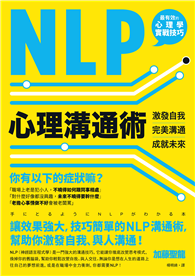Abstract
Figures and Tables Contents Chapter One Introduction 1.1 The object of the study 1.2 Rationale of the study 1.3 Objectives of the study 1.4 The outline of the study Chapter Two Methodology of the Study 2.1 Introduction 2.2 Data collection and transcription conventions 2.2.1 Data collection2.2.2 The transcription conventions 2.2.3 Advantages and disadvantages of the data 2.3 Features of televised debating programmes 2.3.1 Institutional roles and their respective tasks 2.3.2 Topic of current affairs of televised debating programmes 2.3.3 Institution-specific goals of televised debating programmes 2.4. Analytical tools and procedures of the data Chapter Three Literature Review 3.1 Introduction 3.2 Approaches to identity construction 3.2.1 Identity study following the sociolinguistic approach 3.2.1.1 The social constructionism approach 3.2.1.2 The narrative approach 3.2.2 Identity study in conversation analysis 3. 2. 3 Identity study from a psychological perspective 3.2.3.1 Social identity theory 3.2.3.2 Positioning theory and positioning analysis 3.2.3.2.1 Positioning theory 3.2.3.2.2 Positioning analysis 3.2.4 Identity study using the pragmatic approach 3.2.4.1 Identity construction and its markers 3.2.4.2 Identity, face and im/politeness 3.3 Implicit negation 3.4 Achievements and limitations in the prior studies 3.5 Summary Chapter Four The Conceptual Framework 4.1 Introduction 4.2 Working definition of professional identity construction 4.2.1 Intentionality 4.2.2 Multiplicity 4.2.3 Relationality 4.3 Delimitation of professional identity construction via implicit negation 4.3.1 Identity construction and positioning 4.3.2 Identity construction and facework 4.3.3 Identity construction and category4.4 Theoretical Support 4.4.1 Giles & Powesland’s Accommodation Theory 4.4.2 Spencer-Oatey’s Rapport Management Theory 4.4.2.1 Components of rapport management 4.4.2.2 Rapport orientations 4.4.3 Bucholtz & Hall’s Theory of Identity and Interaction 4.5 The conceptual framework of the present research 4.5.1 Implicit negation of other-identity in interaction 4.5.2 Categorization of professional identity construction via implicit negation 4.5.3 Professional identity construction via implicit negation and im/politeness 4.6 Summary Chapter Five Implicit Negation of Other-Identity in Interaction 5.1 Introduction 5.2 The accommodative strategies for implicit negation 5. 2.1 Convergences for implicit negation 5.2.1.1 Positive convergences for implicit negation 5.2.1.1.1 Deprecating self-identity 5.2.1.1.2 Token acknowledgement of other-identity5.2.1.2 Negative convergences for implicit negation 5.2.1.2.1 Re-defining other-identity 5.2.1.2.2 Innuendo of other-identity 5.2.2 Divergence strategies for implicit negation5.2.2.1 Positive divergences for implicit negation 5.2.2.1.1 Drawing an analogy 5.2.2.1.2Turning to the 3rd non/present party 5.2.2.1.3 Explicit self-identification 5.2.2.1.4 Utilizing indexical shifts or depersonalization 5.2.2.2 Negative divergences for implicit negation 5.2.2.2.1 Drawing an analogy via improper vocatives 5.2.2.2.2 Rhetorical questions 5.2.2.2.3 Using a tautology 5.3 A model of implicit negation of other-ide
| FindBook |
有 1 項符合
An Interpersonal Pragmatic Study of Professional Identity Construction in Chinese Televised Debating Discourse的圖書 |
 |
An Interpersonal Pragmatic Study of Professional Identity Construction in Chinese Televised Debating Discourse 作者:Li 出版社:Springer 出版日期:2021-12-05 語言:英文 規格:精裝 / 204頁 / 23.39 x 15.6 x 1.27 cm / 普通級/ 初版 |
| 圖書館借閱 |
| 國家圖書館 | 全國圖書書目資訊網 | 國立公共資訊圖書館 | 電子書服務平台 | MetaCat 跨館整合查詢 |
| 臺北市立圖書館 | 新北市立圖書館 | 基隆市公共圖書館 | 桃園市立圖書館 | 新竹縣公共圖書館 |
| 苗栗縣立圖書館 | 臺中市立圖書館 | 彰化縣公共圖書館 | 南投縣文化局 | 雲林縣公共圖書館 |
| 嘉義縣圖書館 | 臺南市立圖書館 | 高雄市立圖書館 | 屏東縣公共圖書館 | 宜蘭縣公共圖書館 |
| 花蓮縣文化局 | 臺東縣文化處 |
|
|
圖書介紹 - 資料來源:博客來 評分:
圖書名稱:An Interpersonal Pragmatic Study of Professional Identity Construction in Chinese Televised Debating Discourse
內容簡介
作者簡介
Li Chengtuan is a professor of linguistics at the Faculty of English Language and Culture, and a researcher at the Center of Linguistics and Applied Linguistics, Guangdong University of Foreign Studies, P. R. China. His recent research covers pragmatics and discourse analysis, especially identity construction, im/politeness, moral norm and cross-cultural communication. He has published papers in the Journal of Pragmatics, Text & Talk, Intercultural Pragmatics, and Pragmatics & Society, as well as book chapters with Routledge.
|










